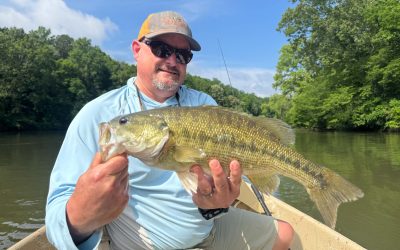Delayed Harvest season is upon us! For those of you that are unfamiliar with this term, Delayed Harvest (or DH for short) is a designation given to portions of rivers and streams that are stocked heavily from November through May. These portions of water are regulated for catch and release, artificial only, one “dropper” fly only (you can only have two flies on at a time), and single hook only.
What this means: fantastic opportunity for fly fishermen: for beginners, early parts of the delayed harvest provide a good place to hone your skills and learn how fish work, as freshly stocked fish are typically not the most well educated. As the season goes on, these streams can get progressively more difficult as the fish learn from fishing pressure, re-distribute themselves, and adjust their diets to their new homes.
What to Fish
- I typically throw a 4 or 5 weight with either a dry/dropper rig or two subsurface flies below a strike indicator. I use split shot, but only after fishing without split shot for a short period of time in order to figure out what part of the water column the fish are feeding in. Be flexible and adjust depth as often as needed!
- Earlier in the season, I tend to throw junk at these fish, but they will become well acclimated and eat more imitative flies as the season goes on. People tend to rely on junkier flies like egg and worm patterns, Pat’s Rubber legs, etc. – don’t count out pheasant tails and hare’s ears, especially variants with hot spots like pink, chartreuse, and orange beads/collars. Flashy flies like Rainbow Warriors, Lightning Bugs, and Glint Nymphs can also be big producers.
- Certain streams can also get hatches through the DH season, so dry flies can be in the cards if you’re there at the right time.
- After your drift, always fish the swing and the hang – I can’t tell you how many times I’ve had fish eat while not paying attention with my line directly downstream and hanging in the current.
- Don’t be afraid to explore around and fish different parts of the stream. Too many people have a tendency to stack up on a hole close to easy access and pound it.
Call us at either shop if you have any questions about Delayed Harvest or any other inquiries. We are full service at both locations and have everything you need to get out there and have success. Always be sure to check regulations for streams before you fish them. Also make sure you have your state fishing license and a Trout Stamp where required – funds provided from license fees support our trout fishing, and a license is always cheaper than a ticket.
Blue Ridge: (706) 956-3044
Cartersville: (770) 606-1100





